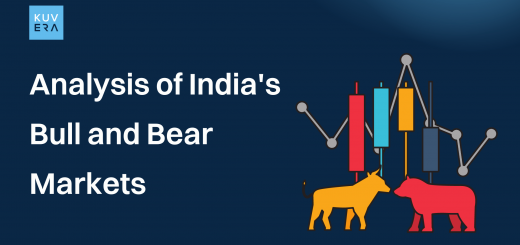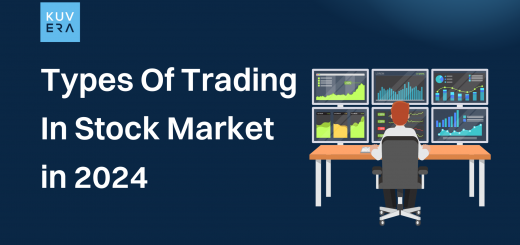Investing in the stock market offers individuals the opportunity to grow their wealth and achieve financial goals. However, navigating the world of stock market investing can be overwhelming, especially for beginners. There are some broad types of investing and investors that you should be aware of before stepping into the stock market.
Understanding these different types will help you make informed investment decisions. In this comprehensive guide, we will explore various types of stock market investing approaches to help you gain a better understanding of the options available.
Types of stock market investing
1. Value Investing
One of the most popular types of investing followed by investing legends such as Warren Buffet, Rakesh Jhunjhunwala and many other successful investors. So, what is value investing?
Value investing involves identifying undervalued stocks that are trading below their intrinsic value. Value investors focus on finding companies with solid fundamentals, such as low price-to-earnings (P/E) ratios, strong balance sheets, and consistent dividend payouts.
This strategy requires patience and a long-term perspective, as value investors aim to capitalise on the market’s tendency to correct undervalued stocks over time.
To understand more about value investing you should read this summary of the value investing bible, ‘The Intelligent Investor’ by Benjamin Graham.
2) Growth Investing
The second most popular investing strategies after value investing is growth investing.
Growth investing focuses on identifying companies with high potential for future growth. Growth investors seek out stocks of companies that are experiencing rapid earnings growth, expanding market share, or disruptive innovations. This strategy typically involves investing in sectors such as technology, healthcare, and consumer discretionary, where companies have the potential to generate significant returns.
Here is a detailed explanation on growth investing and the difference between growth investing and value investing.
3) Dividend Investing
Dividend investing involves investing in stocks that pay regular dividends to shareholders. Dividend investors prioritise stable income streams and look for companies with a history of consistent dividend payments and potential for future dividend growth. This strategy is popular among income-focused investors, such as retirees, who rely on regular dividend payments as a source of passive income.
3) Index Investing
Index investing, also known as passive investing, involves investing in a broad market index, such as the S&P 500 or NASDAQ.
The goal is to replicate the performance of the overall market rather than selecting individual stocks. This strategy offers diversification and lower costs compared to active investing, as it avoids the need for frequent trading and stock selection.
To understand this techniques better, read this comprehensive guide.
4) Momentum Investing
Momentum investing focuses on identifying stocks that have shown positive price trends and are likely to continue their upward momentum. Momentum investors rely on technical analysis and market trends to make investment decisions. This strategy requires careful monitoring of stock prices and timely execution of trades to capture short-term price movements.
If all these investing strategies are confusing, then take a look at this blog where we explore the investing principles followed by the most legendary investors of all time.
Now let us understand different types of investors.
Types of investors
1. Active Investors
Active investors are individuals or institutions who actively manage their investment portfolios with the goal of outperforming the market.
They frequently buy and sell securities, aiming to capitalise on short-term price fluctuations and market inefficiencies. Active investors conduct in-depth research, analyse financial statements, and closely monitor market trends.
They often engage in techniques such as stock picking, market timing, and sector rotation to generate higher returns. They are highly skilled and dedicate a significant chunk of time on daily basis and have in depth knowledge about the markets.
Most professional traders come under this category.
2) Passive Investors
Passive investors, also known as index investors, follow a strategy that aims to replicate the performance of a specific market index, such as the S&P 500 or a sector-specific index.
Instead of trying to outperform the market, passive investors aim to match its performance. They achieve this by investing in low-cost index funds or exchange-traded funds (ETFs), which provide broad market exposure.
Passive investing is popular due to its simplicity, diversification benefits, and lower fees compared to active investing.
This type of investing is best for people who don’t want to be constantly looking at the market, want a long term and stress free type of investing.
3) Value Investors
Value investors seek out stocks that they believe are undervalued by the market. They focus on fundamental analysis, examining factors such as a company’s financial health, earnings potential, and intrinsic value. Value investors look for opportunities to purchase stocks at a discount to their perceived intrinsic value, with the expectation that the market will eventually recognise their true worth.
Value investing often involves a long-term perspective and patience, as it may take time for the market to correct undervalued stocks.
This type of investing also requires extensive research and a through understanding of companies in various sector.
4) Growth Investors
Growth investors concentrate on identifying companies that have the potential for above-average growth in earnings, revenue, and market share. They seek out companies operating in industries with high growth prospects, such as technology, healthcare, or emerging markets.
Growth investors are willing to pay a premium for stocks they believe will generate substantial future returns. This strategy often involves investing in companies at earlier stages of development, which may carry higher risk but also offer greater growth opportunities.
5) Income Investors
Income investors prioritise generating a steady stream of income from their investments. They focus on assets that provide regular cash flows, such as dividend-paying stocks, bonds, real estate investment trusts (REITs), or fixed-income securities.
Income investors typically seek stable and reliable income streams to meet their financial needs, particularly during retirement or periods of low interest rates. They often prioritise investments with attractive dividend yields and a history of consistent dividend payments.
6) Impact Investors
Impact investors aim to generate both financial returns and positive social or environmental outcomes. They allocate capital to businesses, organisations, or projects that address societal or environmental challenges while also seeking financial profitability.
Impact investors consider the environmental, social, and governance (ESG) factors in their investment decisions, supporting causes such as renewable energy, sustainable agriculture, or affordable housing. Their investments align with their values and contribute to a more sustainable and inclusive future.
Conclusion
Understanding the different types of stock market investing strategies is essential for building a well-rounded investment portfolio. Whether you prefer value, growth, dividend, index, or momentum investing, it’s important to align your investment approach with your financial goals, risk tolerance, and time horizon. Remember, each strategy has its own advantages and risks, so thorough research and due diligence are crucial before making any investment decisions.
Interested in how we think about the markets?
Read more: Zen And The Art Of Investing
Watch/hear on YouTube: Investing with legends series
Start investing through a platform that brings goal planning and investing to your fingertips. Visit kuvera.in to discover Direct Plans and Fixed Deposits and start investing today.
#MutualFundSahiHai #KuveraSabseSahiHai! #PersonalFinance












Devendra Prasad Tewari
October 3, 2023 AT 10:42
What is the commission in zerodha plateform on trading of equity shares and how to open trading account